Our History
In the Beginning, God...
In the beginning, God created a beautiful piece of land, planted it with tall pine trees, sturdy hardwood, and large boulders. He placed it in Central Wisconsin, midway between Amherst and Waupaca, beside a babbling stream, initially known as the Waupaca River, but known as the Tomorrow River today.
This is the story of that small piece of land which God claimed for His own. Through the years, it grew to become Riverside Bible Camp as He blessed the labors of those who loved the Lord Jesus Christ and desired that others might know Him and in doing so, have life eternal. Many have found Jesus Christ as their Lord and Savior here and their uncertain tomorrows turned into a sure hope and eternal life with Him who loved them and died to redeem them.
The Founding of Riverside Camp
The year was 1933 and our country was in a depression. Times were very hard and money was scarce, but there was hope in the hearts of some Christians in the Badger and General Irwin Sunday schools as they met together in their homes to study God's Word under the direction of American Sunday School Union Missionary, George R. Graves. During one of these Bible studies, in the Robert and Emma Stedman home, they began to dream of some kind of a camp meeting. An area was selected, poison ivy and brush were removed, and a brush arbor was constructed. In 1934, the first camp was held with about ten families camped in their tents.
"And on the Sabbath we went out of the city by a river-side where prayer was accustomed to be made." Acts 16:13a
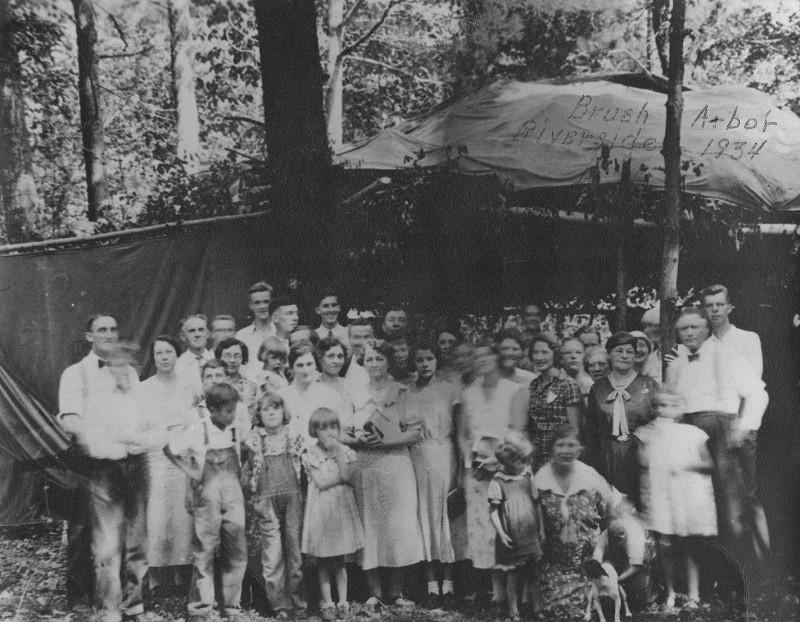
Group photo of the first gathering at Riverside
Riverside was born. It is doubtful that any of this initial group could have foreseen what God would do in the multitudes of young people who would find the Lord here and go out to share the Word of God in many areas of the world.
1930's
The Riverside Bible Conference, as it is known today, grew out of an Independent Fundamental Church Association conference. After the first camp was held, it was decided to form an organization independent of any other organization, to reach a greater number of people. So the Riverside Bible Conference was organized and a lease on the land was obtained for 25 years from Mr. Robert Stedman. The land was later purchased as well as additional land for a baseball diamond. Plans were made for a second camp in 1935, and new dreams included a more comfortable and waterproof meeting place. A used ice house was located for sale and purchased for $100. The building was dismantled and transported to the camp where it was reconstructed in the place where the chapel now stands. An old saw mill was found in Waupaca and also purchased for $100 and moved in the same way to the camp to be used as a dining hall with dorms for the girls above, which is still used for the same purpose today. Other buildings were erected over time to house more people. Thirty six young people attended this first Bible Conference and none left the grounds without making a decision for the Lord, if they were not already Christians when they came.
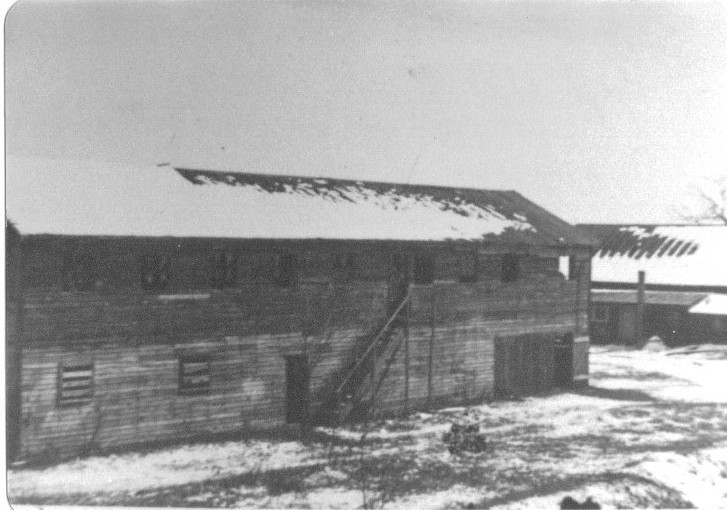
Old saw mill before it was moved and repurposed as the dining hall for the camp
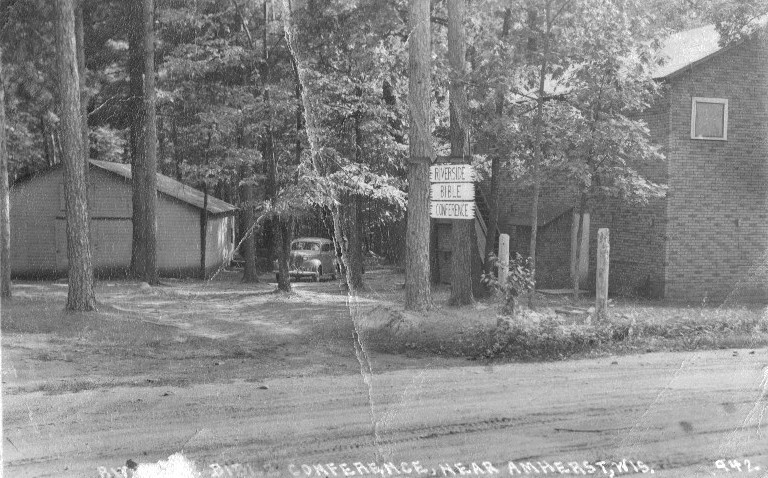
Entrance to the camp, with the chapel and dining hall constructed
1940's
Picture post cards and signs were made to advertise the camp. On October 5, 1945, the first fellowship supper was served to 96 people. Reverend Turner was the speaker and the text was Philippians 3:20,21 and 4:1.
"The purpose of our fellowship is that we might have fellowship with one another and with God, the Father, and His Son, Jesus Christ." 1 John 1:3
The Articles of Incorporation and Articles of Faith were adopted. Reverend Roma L. Twist became president in 1942 and continued until 1964. The first board of directors were R. L. Twist, George Graves, John Sheaffer, Robert Stedman, Warren Cleveland, Louis Skoglund and Carl Nelson.
Buildings were being updated with new roofing and siding or fresh coats of paint. Remodeling and repairs were also being done. Seats for the chapel were donated by the Amerson family. More buildings, including privies, were built, and the Carey Corners Church was purchased and moved to build another cabin. The bell from the church was also incorporated in the camp and is still used today. An electric line was being installed. It was decided that Riverside would rent their grounds to other church groups for 35 cents per person per week. Inflation caused this rate to go up to 75 cents per person per week in 1946. In 1949, the final payment on the land was made to Mr. Stedman and the mortgage burned. The strip of land across the river was also purchased and paid for.
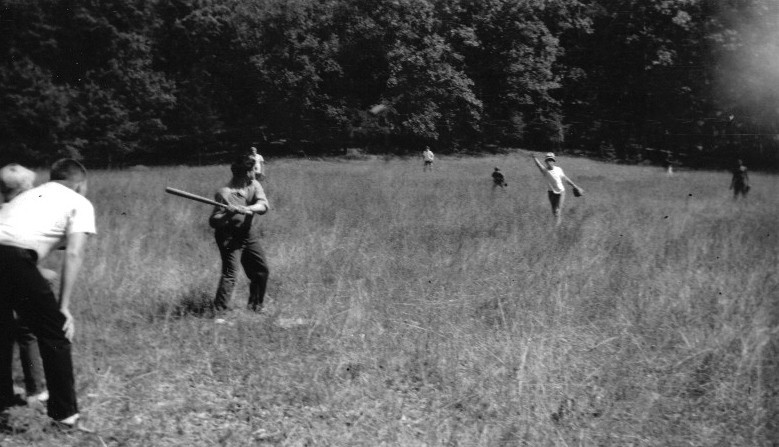
Campers playing in the ball field
1950's
A bridge to cross the river was built and Riverside had access to the swimming hole. A new water system was built, as well as more buildings, including modern restrooms, and expansions on the dining room, which included a front porch, walk-in cooler, and freezer. A telephone line was installed. Camp enrollment grew from 36 in 1934 to 190 juniors and 90 seniors in 1950. More additions were made to make the camp more pleasant, including screens and porches, and activities for guests to enjoy. More groups were coming to stay at camp, and Riverside had many more events, including six weeks of summer camp and VBS. Riverside celebrated their 25 year anniversary in 1959 with two special banquets, thanking God for His blessing.
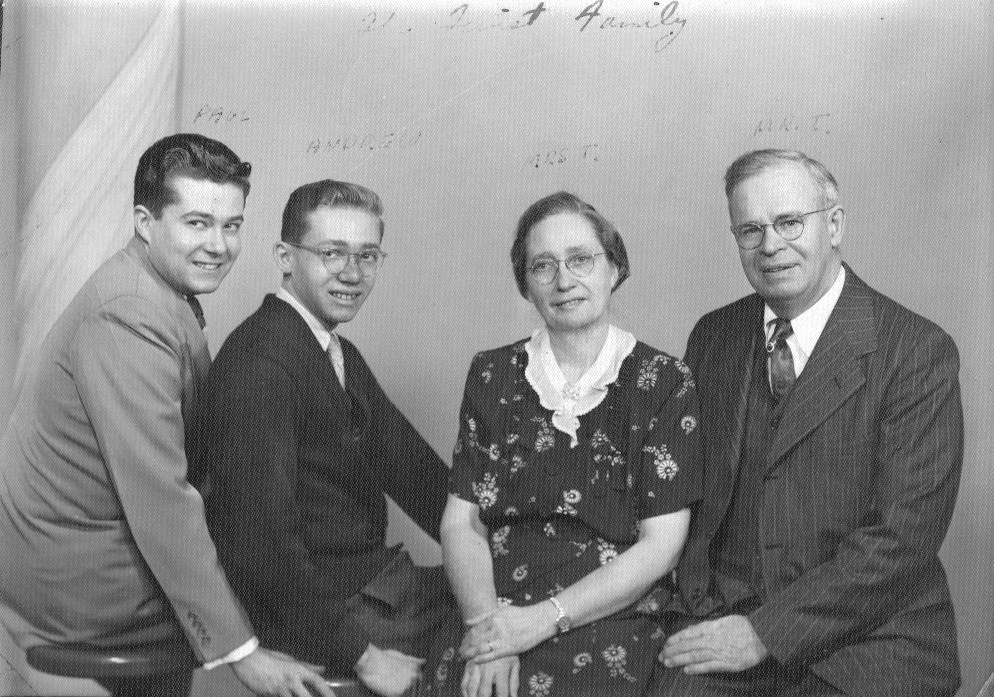
Reverend Twist and his family
1960's
More than 500 people attended camp in 1960 and 40 decisions were made for Christ that year. Remodeling the chapel began and was completed in 1965. A highlight was a District Conference of Missionaries from Iowa, Illinois, Upper Michigan, and Wisconsin held in September 1963. Former campers Dick Knowles and Betty Clower returned to this conference as missionaries from Brazil. Missionary Roger Adams became president of Riverside in 1964, followed by Missionary Dean Nelson in 1968. More improvements were made, including rewiring the electrical system, stonework, kitchen updates, and building (and later repairing) a bridge to the island. Some new things were purchased to help the camp, including a riding mower.
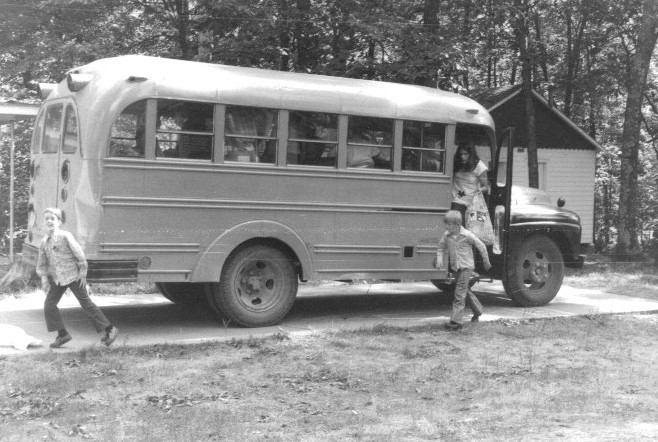
1970's
Camp enrollment continues to increase, growing to 1,671 in 1970. A covered activity center was built and the ball field was improved. In 1971, Reverend Twist passed away. Much of the construction of buildings was done during the time he served as president of Riverside. Reverend Twist had a great desire to have a prayer chapel at Riverside, where all could quietly commune with the Lord. In 1972, a prayer chapel was built in his memory. More updates to the kitchen were made, including a new walk in cooler, a bookstore was opened, and continuous upkeep of camp continued through the years. There were also many updates made to the camp, including safety features such as a fence and fire extinguishers. More churches began connecting with Riverside over the years, with some hosting their own camps at Riverside. In 1978, an additional 39 acres were purchased from Herbert Stedman to continue expanding the camp in the future.
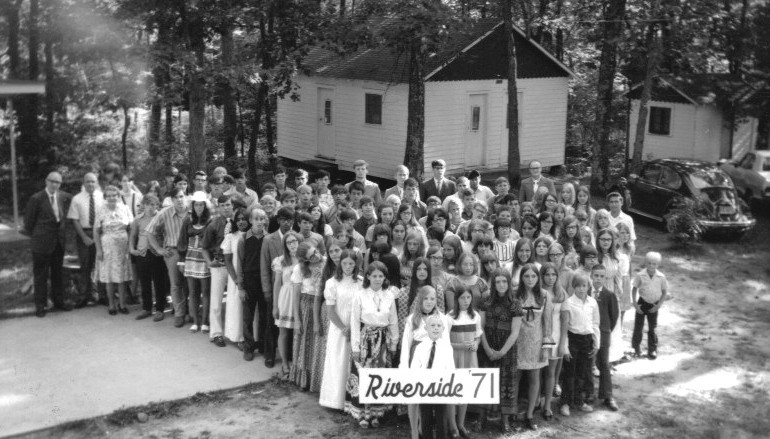
Group photo of a camp in 1971
1980's
Riverside continues to get busier and grow more as more people attend. Additions and upgrades were made from contributions, as usual, from other people, including the large fireplace added to the activity center by Mr. Robert Demski and an ice machine in the kitchen, to name a few. In 1983, a week of paint camp was held, where 46 people attended camp to paint buildings and install dishwashers. Buildings were redecorated and remodeling took place. Beautification of the outdoors continued as well. Trails were cleared and bleachers and picnic tables were built. In 1984, the 50th anniversary took place at Riverside. A book of history was written to document the history of Riverside over the last 50 years.
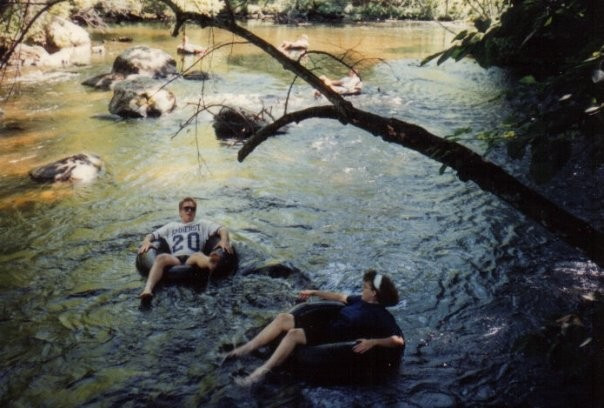
Campers tubing on the Tomorrow River
1990's
A food shed was built to provide summer storage for canned and dry goods. Funds were raised for a large industrial cook stove, which was installed in 1994. Buildings continued to be updated, and a fundraising committee was formed for new steel roofing on the dining hall and nurse's cabin. Andy and Bobbi Jo Frey were introduced to the Riverside Association in 1999 and it was decided that they would work as the new missionary couple in place of Dean and Darlene Nelson, who retired the following year.

Exercises on the basketball court
2000's
In 2001, Darrie Nelson became the first executive director at Riverside. He and his family moved in the caretaker's house in June 2002. Aside from a one year leave of absence, the Nelson family has served in their position to this present day. More updates were made to buildings, including a gas fireplace in the prayer chapel, ceramic tiling in the bathrooms, and a gazebo on the island. Also during this time, many meetings took place, committees were organized, and plans were made regarding the future of Riverside. In 2007, the strategic plan was presented to the association and adopted. One of the first projects in the strategic plan was the construction of the Hebron Retreat Center, replacing many smaller cabins. The work on the retreat center was completed in 2009, which was also when Riverside celebrated its 75th anniversary. With the winterized retreat center newly opened, Riverside offered a winter youth retreat called Infuse.
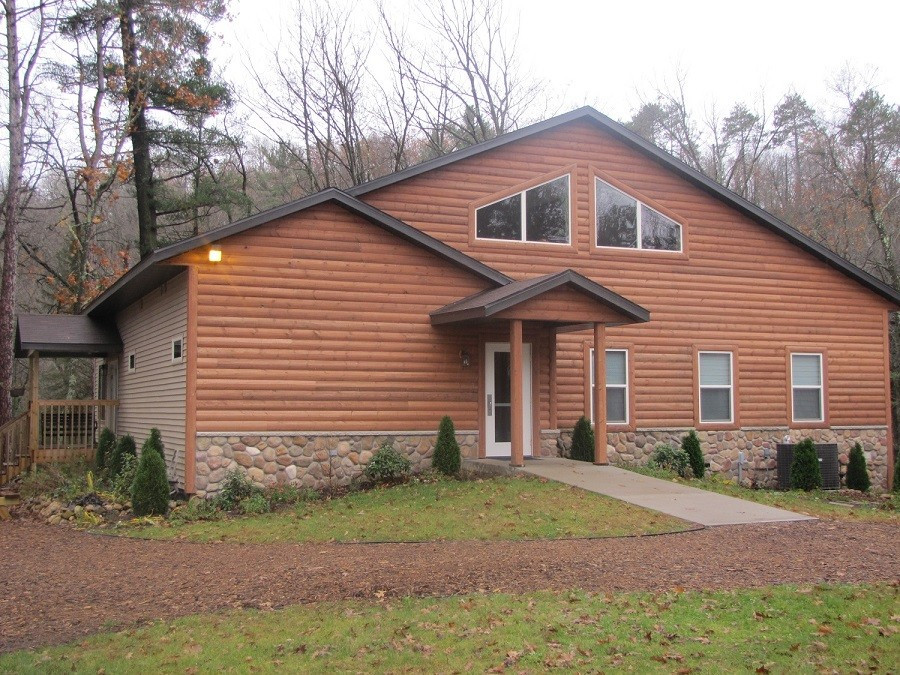
Hebron Retreat Center
2010's
A patio was built off the retreat center. With winterized buildings, Riverside begins to offer more fall and winter retreats in an effort to reach more people year-round, including Craft Camp for women, Ignite for junior high students, and LIFT retreat for young adults. Riverside started a new summer staff program called Lives Inspired for Truth (LIFT), giving many young people a missionary experience as they serve at camp. A memorial garden is planted behind Bethany Hall, and Fair Haven is remodeled for year-round use and renamed Haven of Hope. In 2012 and 2013, Riverside acquired 2 farms, which are used for a farm education initiative that is now part of Riverside's programming. Starting in 2014, campers attending Riverside get opportunities to visit the farm. In 2016, Executive Director Darrie Nelson went on a mission trip to Haiti, where he met Michael Dessables, who was later hired to work at Riverside during the summer, and has returned as a volunteer since then. As a continuation of this partnership-of-sorts, Riverside runs fundraisers during VBS and summer camp for orphanages in Haiti. Later on, plans are made to lead their first mission trip to Haiti in 2019 to serve with other leaders there. The trip was in January, with a group of eight traveling to help at Beauvoir Deshommes' orphanage to build bunk beds, donate supplies, and provide a day camp experience at the orphanage and school. The present day grounds and maintenance workers, Brian and Annie Hulka, joined the Riverside staff in 2013. Scott Latzig joined Riverside as full-time volunteer staff in 2017.
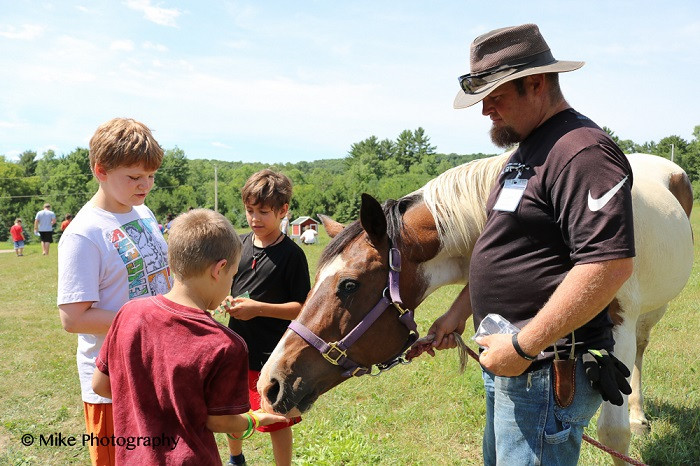
The campers feeding one of the farm animals
Present Day
Riverside is continuing to grow, with around 4,000 people attending every year. The ten families at the very first Riverside meeting probably never imagined how much the camp would grow in the decades to come. As time passes by and things change, Riverside stays dedicated to the core values that have shaped the camp for nearly 85 years and hopes to continue impacting generations for the glory of Christ for years to come.

